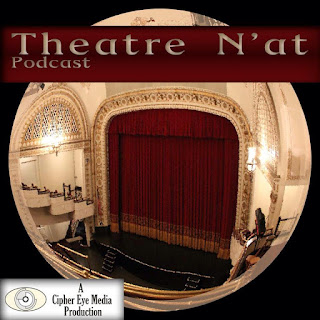Sure, YouTube celebrities like PewDiePie and Markiplier were at the forefront of the Let's Play movement, but it was a growing company known as Achievement Hunter that introduced me to Let's Play.
I remember stumbling upon my first Let's Play video. Two men were operating the stiff hands of a ridiculous game called Surgeon Simulator while commentating on their flubs as they attempted do heart surgery. It was absolutely hilarious. Since then, I've been following the Achievement Hunter troupe and taking notes on the technology that they use to create these wonderful videos.
| The first iteration of my video game project. |
But then life happened. In 2014 and 2015, I was moving around a lot in a whirlwind of work and living. I was also more heavily involved in the filmmaking community, meaning that I had to put this project on the back burner. I hate when I'm forced to do that, but there is only so much time in the day.
Around late 2014, I recorded my first Let's Play test run with my now ex-girlfriend. We played together in a world that we created in Minecraft. It was my first taste on how difficult this process could be. Tensions were high as technology was failing. It was definitely not a success. So, I decided to, once again, put the project on the back burner.
Then more moving happened and more fell on my lap, consuming all my spare time. It was 2016 and I was living in a tiny apartment in Pittsburgh. My budget was tighter than usual, but my passions remained the same. My friend came to me with the idea to start a podcast, being one that never shies away from new opportunity, I agreed to work on back-end of the podcast, handling the hardware and software that would record, edit, and release episodes of the podcast.
 I found that my aspects of the process could be incorporated into recording for a Let's Play. Once ,
I found that my aspects of the process could be incorporated into recording for a Let's Play. Once , again, I felt the urge to make a Let's Play. This time, I used the knowledge I had gained from recording a podcast.
I started with something simple. I tried capturing a mobile game off of my phone using software that was already built into into my PC. It's a very simple setup for capturing. At that time, the Miitomo app by Nintendo had just released. This hybrid game/social app was perfect for my experiment. I event tried adding a facecam (webcam recording me while I capture my audio and the screen). The results were satisfying.
Unfortunately, I had to shelve my second attempt before I even got around to editing it. This time, it was for more personal reasons. Life really has a way of throwing some curveballs.
 |
| The most recent iteration of my gaming project. |
I was highly satisfied with the results, though pretty amateurish by nature. My next step was to work on the back end and prepare all of the resources necessary to edit and publish my video. After a lengthy process of trial-and-error, software testing, and workflow testing, I was satisfied with my results.
Here is the final product:
Thanks so much for taking the time to read this and thanks again if you gave the video a watch. There's still a lot to improve on. My philosophy has always been that everything has room for improvement. Feel free to pass along any of your own input. I love constructive criticism.
Until the next time.
Cheers!
Steven



























